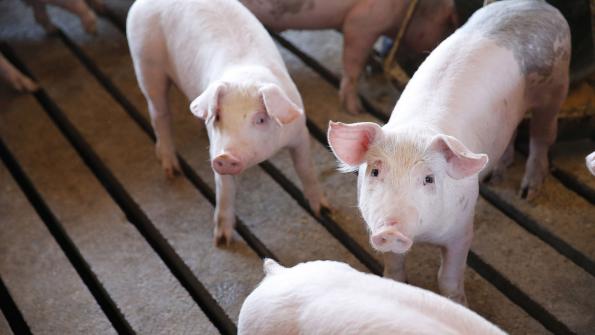For the 180 pounds and over category, there were 13.059 million head, up 7.5% from a year ago.

The U.S. inventory of all hogs and pigs on June 1 was 75.5 million head, the highest since estimates began in 1964. This was up 4% from June 1, 2018, and up 1% from March 1, 2019. Pre-report analysts had expected that number to be 3%.
Breeding inventory, at 6.41 million head, was up 1% from last year, and up 1% from the previous quarter. That is smaller than analysts had expected at 2.1%.
Market hog inventory, at 69.1 million head, was another quarterly record, up 4% from last year, and up 1% from last quarter. Analysts had expected that number to be up 3.1%. This is also the highest June 1 market hog inventory since estimates began in 1964.
The under-50-pound category was 22.019 million, up 3.2% from one year ago. Analysts had expected that number to be up 3.6%. For 50-to-119-pound category there were 19.606 million head, a 2.7% increase from last June. Analysts had forecast that number would be at 2.8%. The 120-to-179-pound category was 14.427 million head, a 3.1% increase up against pre-report estimates of 3.2%.
For the 180-pounds-and-over category, there were 13.059 million head, up 7.5% from a year ago. The average analyst guess on that was 4.6%, but actual slaughter so far during June has been up to 9.2%.
Lee Schulz, Iowa State University associate professor of agricultural economics, says digging back into revisions shows why there was such a larger 180-pounds-and-over category.
“The December, February pig crop was increased 1.3% from the previous report. That about 428,000 pigs more, and that came about because of more sows farrowing so we’ve seen an increase in 39,000 sows farrowing. That collectively really contributed to a lot larger 180 pounds and over,” Schulz says. “I think that very much matches the 9% increase in slaughter we’ve seen here in November [for projected slaughter]. I think that is really important to key in on, why we seen that big increase in the 180 pounds and over, and now that we’re accounting for those hogs.”
U.S. hog producers intend to have 3.18 million sows farrow during the June-August 2019 quarter, down slightly from the actual farrowings during the same period in 2018, but up 3% from 2017. Intended farrowings for September-November, at 3.17 million sows, are up slightly from 2018, and up 2% from 2017.
The March-May 2019 pig crop, at 34.2 million head was up 4% from 2018. This is the largest March-May pig crop since estimates began in 1970. Sows farrowed during this period totaled 3.11 million head, up slightly from 2018. The sows farrowed during this quarter represented 49% of the breeding herd. The average pigs saved per litter was a record high 11.00 for the March-May period, compared to 10.63 last year.
Scott Brown, University of Missouri Extension economist, says the March-through-May per litter size coming in at 11 was certainly one of the more surprising numbers coming out of the report.
“It just reminds me about how good per litter have been in a number of states. You look at Indiana, Kansas, Minnesota, Missouri, North Carolina, Pennsylvania, Texas, all with growth in excess of four-tenths of a pig, relative to a year ago,” Brown says. “It certainly suggests to me that some of the disease issues that we’ve seen in the industry have come at better control, PRRS being the one that sticks out that, it may have given us this big jump. I think if we continue to see pigs per litter running at these kind of growth rates going forward, it spells certainly a lot more hogs as we go through time.”
Another interesting figure that came from the June report was the breeding inventory at 6.41 million head, Brown says.
“Seeing states like Iowa, down 40,000 head, and Minnesota, North Carolina also being lower, but those declines being outweighed by what happened in states like Illinois, Missouri, Nebraska, South Dakota, and the ‘other state’ category was also up 25,000 head out of this report relative to a year ago,” Brown says. “To me, there is some interesting growth in those states, that are outside of that Minnesota, North Carolina area. Those states, I think, are important as we move forward and could suggest, I think, further growth as we look ahead.”
About the Author(s)
You May Also Like





